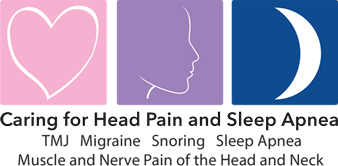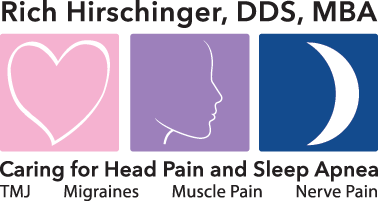

Rich Hirschinger, DDS, MBA
Diplomate American Board of Orofacial Pain
9615 Brighton Way, Suite 323
Beverly Hills, CA 90210
888.981.8981
Diplomate American Board of Orofacial Pain
9615 Brighton Way, Suite 323
Beverly Hills, CA 90210
888.981.8981
More About TMJ
Life with TMJD
A person with a TMJ disorder may experience a progression of symptoms. It's unknown why symptoms may worsen and improve over time. When a person is affected by symptoms related to the TMJ, the condition is usually manageable with common pain treatments such as over-the-counter pain relievers, exercises, and rest. In most cases, symptoms disappear within weeks.Those suffering from more persistent symptoms related to disorder, disease or dysfunction of the temporomandibular joint can take steps to reduce painful and disruptive symptoms through basic daily tasks. By making and following a reliable self-treatment schedule, one can provide basic self-care tasks that may improve the condition. For example, regularly performing exercises as recommended by a doctor or physical therapist often improve the symptoms of TMJD.
It's also recommended that a person with TMJD undertake daily activities meant to reduce tension and stress. Yoga, meditation and breathing exercises may release stress and tightness in the muscles of the face, neck, shoulders and back.
Maintaining good posture at work, while driving, while at home and during recreational activities is also important to the relief of muscle and joint tension in the jaw, neck, back and head. A person should avoid holding the phone between the shoulder and ear and instead hold a phone with a hand to the ear, or use a headset to avoid crunching the muscles of the neck and shoulder and causing unnecessary strain.
Yawning, yelling, singing and other activities that may cause a person to have to open his or her jaw wide should be avoided. If a yawn is imminent, place your tongue on the roof of your mouth and slide it back to limit the opening of the jaw. Avoiding opening the mouth wide to eat is also recommended. Keep food in small and bite-sized pieces, and also opt for softer foods, such as scrambled eggs, mashed potatoes, yogurt, and cooked and diced fruits and vegetables, to avoid aggravating the condition. Crunchy and chewy foods such as salads, nuts, certain breads, and steaks should be avoided.
Support groups such as the TMJ Association helps educate patients on how to minimize the effect of painful and disabling symptoms, updates members on the latest research and news in TMJD studies, and offers those with TMJD a supportive and understanding community to ask questions and share experiences.
Signs and Symptoms of TMJD
The primary symptom of temporomandibular joint disease or disorders is pain in the jaw joint, on either one or both sides, or the closely surrounding areas. Other symptoms include:
- Soreness or aching around the ear
- Stiffness in the jaw
- Locking of the jaw joint or limited movement so that it is difficult to open or close the mouth
- Headaches or aching in the face, head, neck, shoulders or back
- Radiating pain in the face, jaw or neck
- Difficulty chewing, swallowing, eating, speaking or breathing
- Painful clicking or popping in the jaw joint during jaw movement
- Altered, uncomfortable or uneven bite
Patients with TMJD frequently experience more than one of the above signs of the condition. However, it may be difficult to diagnose a TMJ disorder because these symptoms are also common of a number of other conditions including cavities, abscess in the mouth, or sinus or ear infection.
Some other diseases are commonly experienced along with TMJD. Other conditions including arthritis, myofascial pain, fibromyalgia, hypermobile joints, irritable bowel syndrome, sleep disorders, Lyme disease, scleroderma, dystonia, or Ehlers-Danlos syndrome, are thought to have an effect on, perpetuate or worsen TMJD symptoms.
If TMJD is suspected, an individual may want to keep a record of any symptoms that occur so that they may share them with a doctor. Take note of any activities that may trigger the pain, any trouble sleeping, the range of symptoms experienced, any recent dental procedures and new activities or stress that may be occurring in your life. Also observe changes to the range of motion in the jaw, any changes in alignment of the jaw, and any points of pain or discomfort to the touch.






